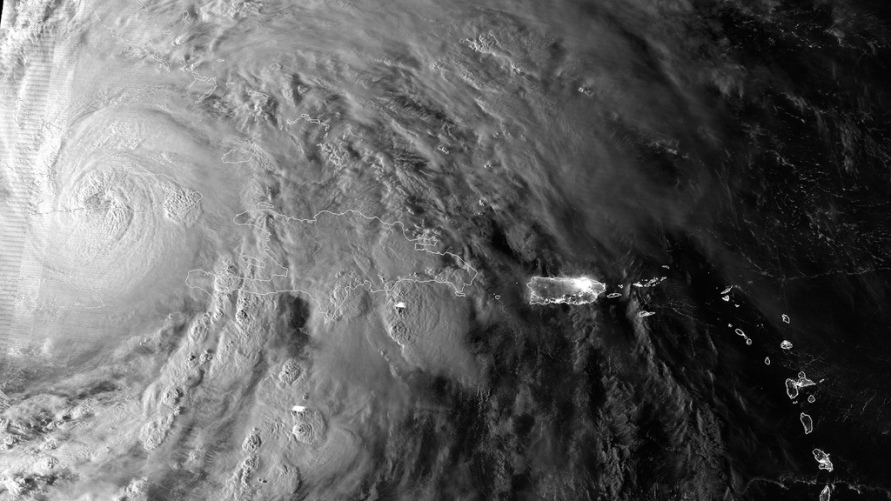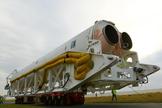NASA Center in Virginia Braces for 'Frankenstorm' Hurricane Sandy

As Hurricane Sandy barrels toward the U.S. East Coast, NASA is battening the hatches at its Virginia coast launch and flight testing grounds to prepare for a literal wallop from the oncoming "Frankenstorm." A private rocket is on a launch pad at the site awaiting its maiden flight, and must also be protected.
The space agency's Wallops Flight Facility on Wallops Island, Va., is bracing for potential flooding and high winds from Sandy when it arrives early next week. The storm, currently a Category 1 hurricane, is expected to merge with cold weather fronts early next week to become a more powerful storm.
"We're watching it closely," Wallops spokesman Keith Koehler told SPACE.com Friday (Oct. 26). "We've started preparations like putting aircraft into hangars and clearing those hangars as best we can, just taking the appropriate precautions."
Hurricane Sandy is expected to make landfall between Virginia and New York sometime between Monday and Tuesday (Oct. 29 and 30), according to National Hurricane Center forecasts. [Photos: 'Frankenstorm' Hurricane Sandy from Space]
The Wallops Flight Facility is the center of NASA's suborbital research projects and oversees balloon and sounding rocket launches from the Virginia's Eastern Shore and elsewhere. The facility is staffed by 1,100 workers and also serves as a hub for aeronautics research.
Koehler said that on Sunday (Oct. 28), the flight center will be closed, with only a skeleton crew of Wallops staff, security and emergency personnel remaining on Wallops Island. A public night sky observing event scheduled for Saturday was canceled due to the weather, he added.
Wallops is also the home of new commercial spaceflight efforts and the first private Antares rocket by the Virginia-based company Orbital Sciences Corp., stands partially assembled atop a launch pad at the nearby Mid-Atlantic Regional Spaceport. The Antares rocket's first stage was moved to the launch pad on Oct. 1 for fueling and other tests.
Get the world’s most fascinating discoveries delivered straight to your inbox.
Propellant hoses to the rocket are being detached to help prepare it for the upcoming storm rains and winds, Orbital Sciences spokesman Barron Beneski told SPACE.com. The rocket's nearby hangar is also being safeguarded against the storm.
Orbital Sciences has a $1.9 billion contract to launch at least eight cargo delivery missions to the International Space Station for NASA using its Antares rockets and Cygnus, a new robotic spacecraft. The first Antares rocket is slated to launch by the end of the year.
As of Saturday morning, Hurricane Sandy was about 165 miles (270 kilometers) north of Great Abaco Island and 335 miles (540 km) southeast of Charleston, S.C. It had maximum sustained wind speeds of75 mph (120 kph) and was moving north-northeast at about 10 mph (17 kph).
The storm caused at least 43 deaths as it barreled across the Bahamas in the Caribbean, according to news reports.
NASA and the National Oceanic and Atmospheric Administration are tracking Hurricane Sandy from space using several satellites. The hurricane has also been seen from the International Space Station in Earth orbit.
This story was provided by SPACE.com, a sister site to LiveScience. You can follow SPACE.com Managing Editor Tariq Malik on Twitter @tariqjmalik and SPACE.com on Twitter @Spacedotcom. We're also on Facebook & Google+.

Tariq is the editor-in-chief of Live Science's sister site Space.com. He joined the team in 2001 as a staff writer, and later editor, focusing on human spaceflight, exploration and space science. Before joining Space.com, Tariq was a staff reporter for The Los Angeles Times, covering education and city beats in La Habra, Fullerton and Huntington Beach. He is also an Eagle Scout (yes, he has the Space Exploration merit badge) and went to Space Camp four times. He has journalism degrees from the University of Southern California and New York University.





